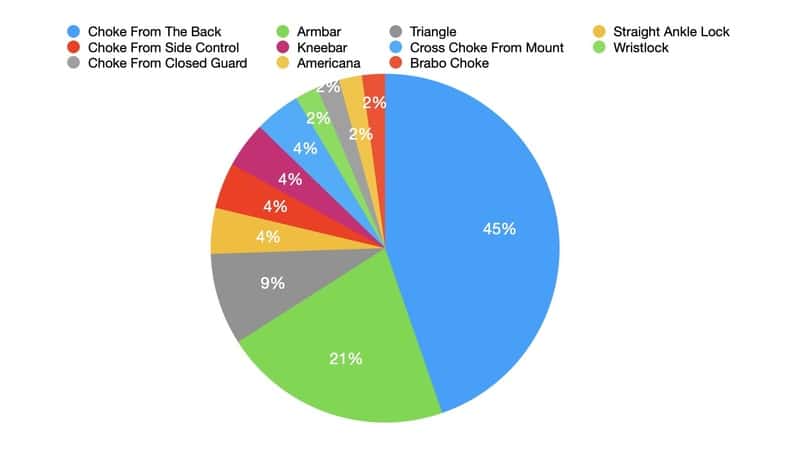

The back is the most dominant position in jiu-jitsu, with chokes from the back accounting for nearly half of all finishes at the black belt level in gi competition.
Same for no gi competition. The Rear Naked Choke from the back has been the top submission at ADCC multiple years in a row, surpassing both the heel hook and the armbar in frequency.
Given the effectiveness of being behind someone with your hooks in, it’s important to have a variety of ways for taking the back. If you can threaten your opponent with the backtake from every position then you’ll have a HUGE advantage.
One unorthodox but highly effective backtake I want you to consider is the rolling backtake from mount.
This technique can be used whenever you’re in mount and he’s on his side, typically trying to get you off of him using a kipping or elbow-knee style of escape.
Whenever he gives you this trigger position you can threaten to go behind him with the rolling backtake from mount attack.
Here’s how to do it…
I hope you watched all the way through that video, because after breaking down the regular rolling backtake from mount, at about the 3:55 mark I cover a second way to take the back if your opponent refuses to let the first method work.
The leg dexterity and positional familiarity developed by drilling this attack can be super-useful in other positions as well. It’ll train you to become hyper-aware of opportunities in scrambling when you can bundle your opponent’s legs together and hit them with this move.
This leg bundle style of rolling backtake comes from the Rolling Backtakes for Everyone instructional, where I show it as one of many rolling backtake mechanisms and as a method of recountering your opponent’s attempted defenses to the rolling backtake.
Rolling backtakes are some of the coolest moves, but they’re also much simpler than they look. If you can do a shoulder roll, you can almost certainly incorporate them into your game.
To do them you don’t need flexibility, you don’t need athleticism, you don’t need crazy strength, and you don’t need to be young.
In this instructional we cover the mechanics, entries, training methods, counters, and drills to make you really good at rolling backtakes as fast as possible.






